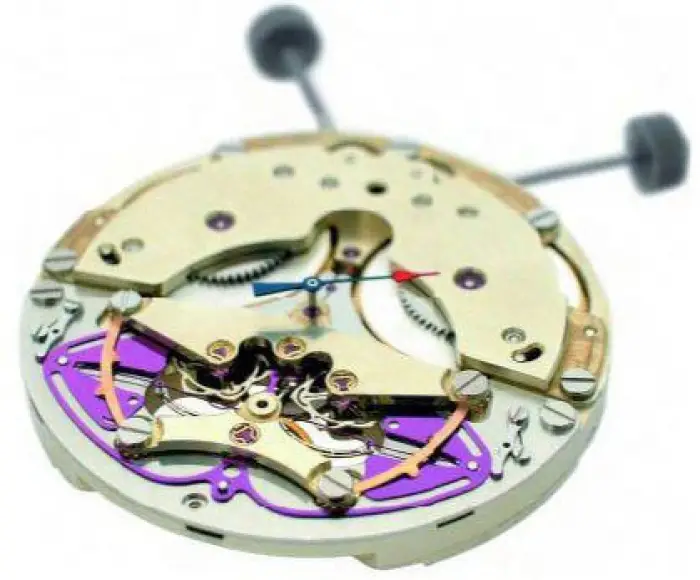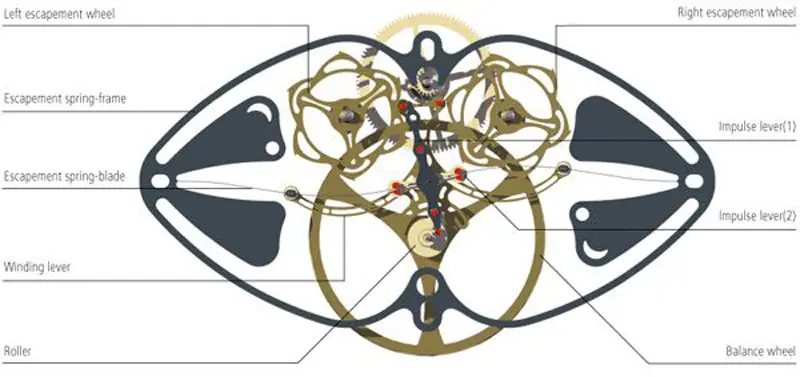
The constant force escapement project with a bending blade in the frame was resumed in 2004 by Girard-Perregaux, for whom Nicolas Déhon has been working since 2002. GP also acquired patents filed by Rolex. In the meantime, the market for silicon technology has emerged, which has made it possible to resume work.
Silicon has seemingly contradictory properties such as hardness and elasticity, which allow it to move rapidly from a stationary state to a deflected state, releasing energy and not exposing the material to loads that could lead to its cracking or fracture.

The left escapement wheel supplies energy to the anchor causing the elastic deformation of the escapement blade and accumulates energy. The blade works as a micro energy storage until the blade is turned to the opposite stable state. A small spline on the wheel escapement locks the blade and precisely adjusts the impulse lever forks.
At the centre of the balance wheel, the roller interlocks with the pulse lever forks to unlock the blade, which returns to the opposite primary position. In this way, it generates an impulse to the balance wheel and moves the drive lever in the opposite direction. Then the second, right escapement wheel bends the blade again. In this way, the balance wheel moves the drive lever between the two escapement wheels, just as the anchor of swiss escapement moves between the teeth of a single escapement wheel.
In this unconventional way, bending blade provides energy. The blade impulse provides a constant force because the blade releases the same energy when distortion in the opposite direction. The given impulse remains constant until the tension spring energy is exhausted, providing a constant amplitude to the balance.
From 2013 Girard-Perregaux Constant-Force Escapement is available in the “haute horlogerie” watch collection for sale.
Application: Tomasz Jakubas
Other records: Timeline of Watchmaking Innovations













































 INSTAGRAMIE
INSTAGRAMIE










 greenlogic.eu
greenlogic.eu